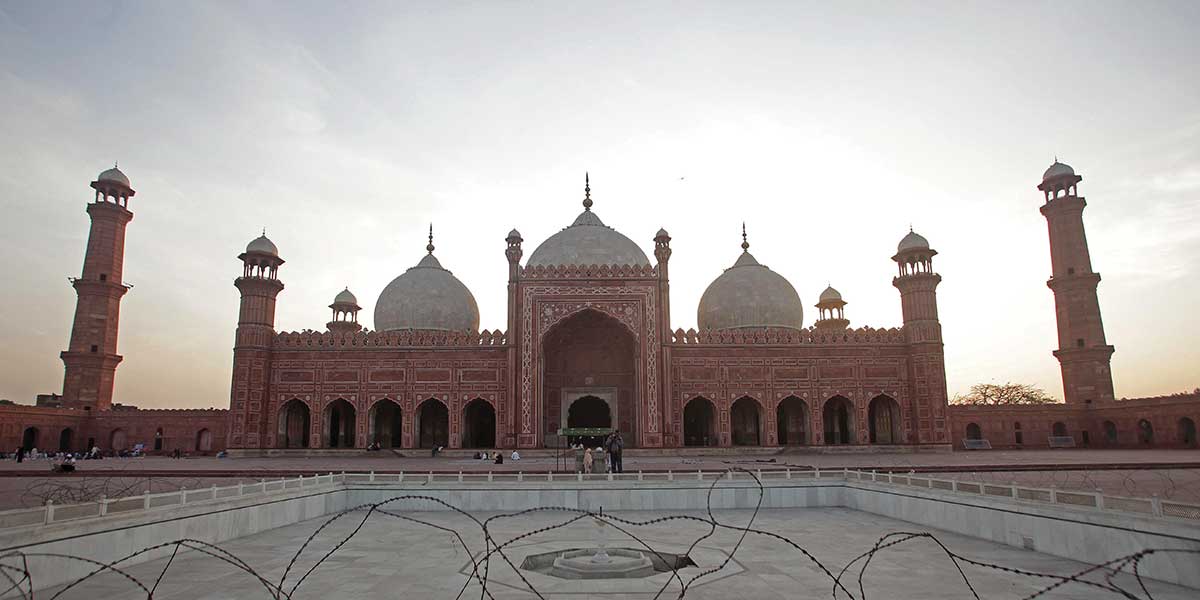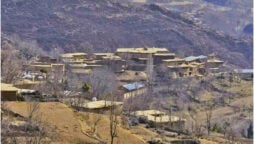Synopsis
The religious edifice was constructed in a short span of two years from 1671 to 1673

The grand Badshahi Mosque is located in the proximity of the historic walled city of Lahore and to the west of the iconic Lahore Fort. It is a prime example of the Mughal architectural etiquettes. The mosque demonstrates the skill of artisans in carving with architectural perfection. The marvellous religious edifice was constructed in a short span of two years from 1671 to 1673. It was built with the spirit of religious sophistication during the reign of Mughal Emperor Aurangzeb. Its enormous structure and perfection depict the architectural wisdom of the Mughal era. Despite the limited construction resources and availability of tools, techniques required to build such mass scale structures, the architecture of the building was crafted with utmost perfection. While looking at the mosque, one cannot point out any flaw in its architectural continuity. It remained the world’s largest mosque, since its construction in the year 1673, until the year 1986.
The Badshahi mosque is one of the largest congregational mosques in Pakistan today with the capacity of 100,000 worshipers approximately. The mosque is situated along the Roshanai Gate which is among the thirteen historical gates of Lahore that is to the south of the famous Hazuri Bagh. The entrance gate of the grand mosque and famous Alamgiri Gate of the Lahore Fort faces each other, and a garden – the Hazuri Bagh lies between the two iconic edifices.
The Alamgiri Gate is at the eastern side of the Hazuri Bagh, while the entrance gate of the mosque lies to the west of the rectangular garden. The tomb of Allama Iqbal – poet of the East, is also right next the entrance of the mosque.
The Mughal emperor built this mosque in 1671 to honour his successful military expeditions against the Maratha King, Chahatrapati Shivaji. The construction of the mosque was done under the supervision of Muzaffar Hussain who was also known as Fidai Khan Koka. He was the foster brother of Aurangzeb and Governor of Lahore.
Structure
The architectural design for the Badshahi Mosque was identical to that of the Jamia Masjid in Delhi. Emperor Aurangzeb wanted to differentiate the appearance of the structure from others similar mosques built during the reigns of his predecessors. The Badshahi and Delhi mosques both are decorated with redstone and with inlaid white marble. The complete name of the Badshahi mosque is ‘Masjid Abul Zafar Mohiuddin Mohammad Alamgir Badshah Ghazi’, and is also inscribed at the inlaid marble on the huge entrance portal.
The entire complex and building of the mosque was built on a plinth. The entrance to the mosque is through a double story edifice built with redstone, besides every facade of the entrance is embellished with sketched and carved paneling. The entrance portal is decorated with crafted Persian architectural motif known as the Ahoopay. The gateway edifice is approached by climbing 22 steps. The iconic and magnificent gateway has various chambers in it. It is believed that the Holy Hairs of Prophet Muhammad (P.B.U.H) and his cousin Imam Ali (A.S) are kept in one of these rooms.
The Massive courtyard is paved with redstone and it covers a total area of 276,000 sq feet. The massive courtyard can oblige almost 100,000 worshipers at once. The beautiful courtyard is confined with colonnade corridors. A pool of fresh water is also available at the courtyard for ablution. There are four huge triple story octagonal minarets standing 60m tall from the four corners of the edifice. The minarets are built and decorated with redstone, which is the characteristic of the mosque. At the top of every minaret a white marble canopy has been built. The white marble and redstone colour contrast of the mosque enhances the beauty of the structure. The façade of the chief edifice is constructed with redstone, besides being embellished with white marble inlay. The main prayer hall has the capacity to accommodate 10,000 people for prayers at a time. The four octagonal smaller minarets are also attached to the corners of the prayer hall. Above the prayer chamber, a massive central bulging marble dome along with two smaller domes were constructed at either side.
The building’s redstone is externally ornamented with inlaid white marble motifs and lines. The exterior and interior of the main prayer hall is decorated with the Mughal architectural motifs such as flowers with their spider tendrils, chain interlacing treated with bold comfort. The chambers that confine the mosque complex contains rooms for religious teachings. During the reign of the Sikh ruler Ranjit Singh, the sanctity of the mosque was violated as the main courtyard served as the stable for army horses while the study chambers enclosing the courtyard were used as the rooms for soldiers.
Sher Singh the successor of Ranjit Singh used the edifice of the mosque as a stronghold of defense during the war against British army known as the first Anglo-Sikh war in 1841. The minarets of the iconic mosque were used to fire light guns. A secret tunnel linking the main fort with the mosque was used for the purpose of storing gunpowder.
Moreover, when the British took over the control of the Lahore city, the mosque was also desecrated and it was turned into a military base and many rooms were demolished, however with the rising Muslim sentiments and anger against the usage of the prayer edifice as a military base, the British in 1852 established a Badshahi Masjid Authority and the conservation and renovation work was carried out besides restoring the status of the edifice as a place of worship.
Before the independence and after creation of Pakistan in 1947, the conservation and restoration work continued. In 1974, the second summit of the leaders of Islamic world was held in Lahore and many prominent Muslim leaders such as Muamar Gaddafi, King Faisal, Yasir Arafat, Sabah al Saleem Al Sabah (III) along with Zulfikar Ali Bhutto offered Friday prayers at the historic mosque.
In the year 2000, the marble inlay of the prayer chamber was renovated and in 2008 the redstone large blocks tiles were imported from Jaipur, India for the replacement of damaged tiles. The grand Badshahi Mosque was included in the tentative list of UNESCO World Heritage site in 1993.
Catch all the Breaking News Event and Latest News Updates on The BOL News
Download The BOL News App to get the Daily News Update & Live News.












 Read the complete story text.
Read the complete story text. Listen to audio of the story.
Listen to audio of the story.